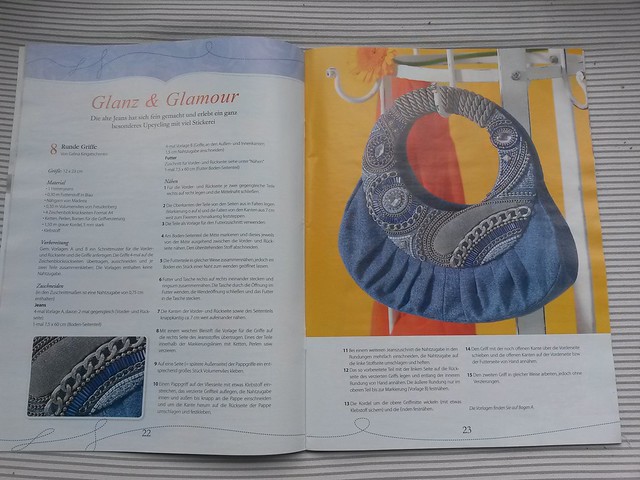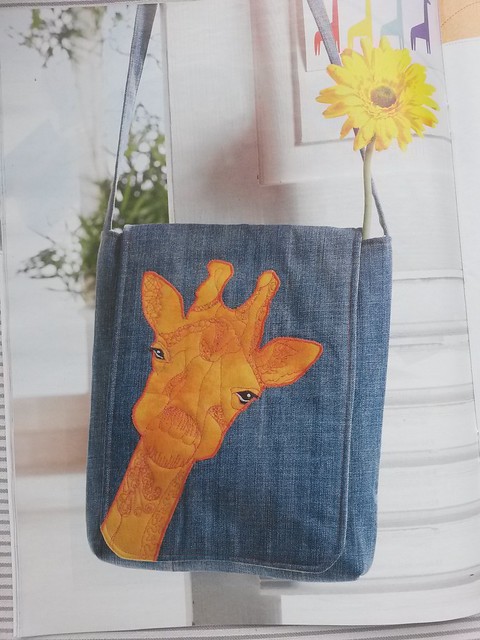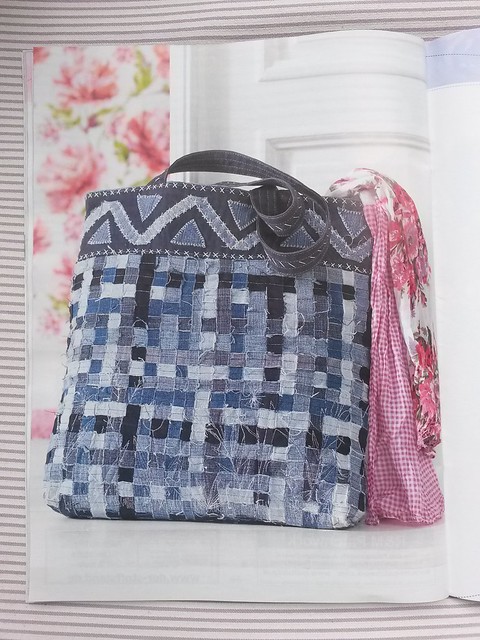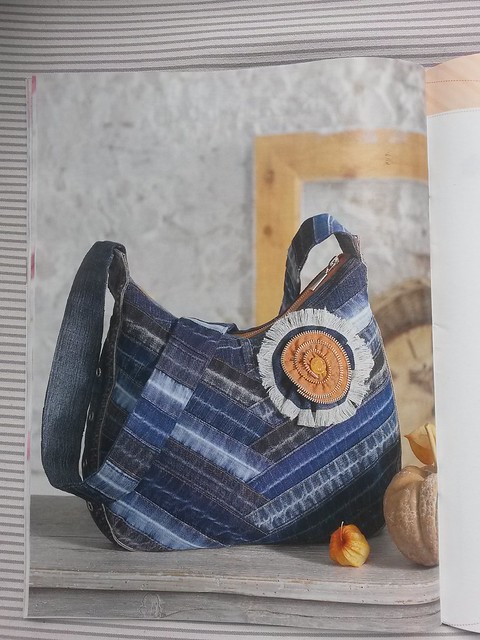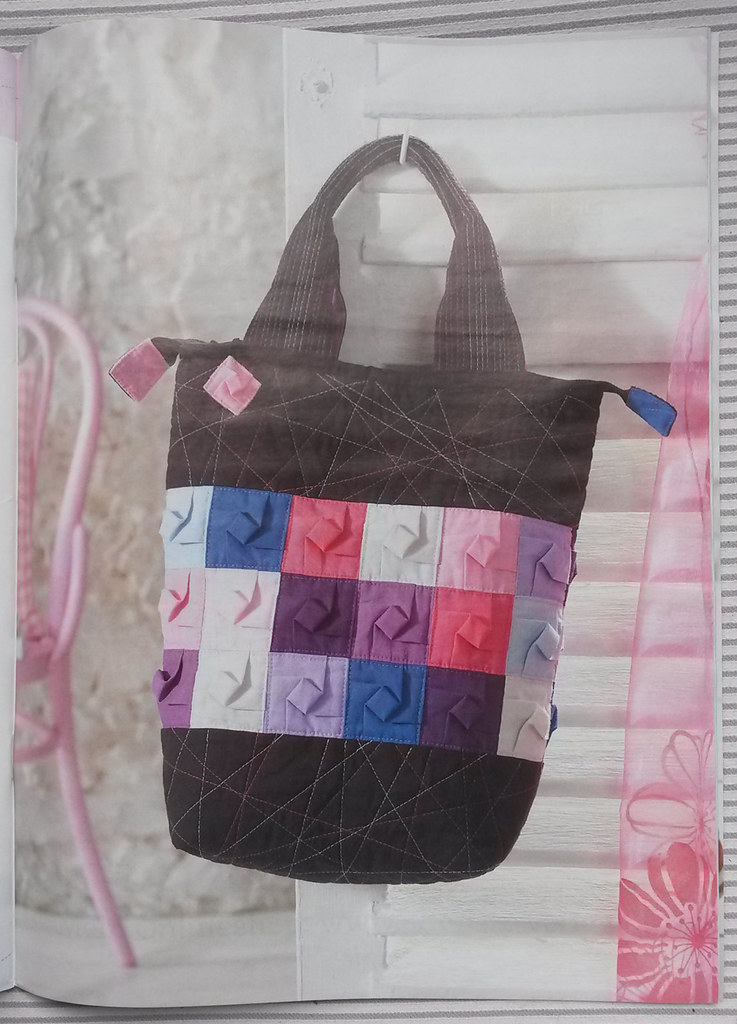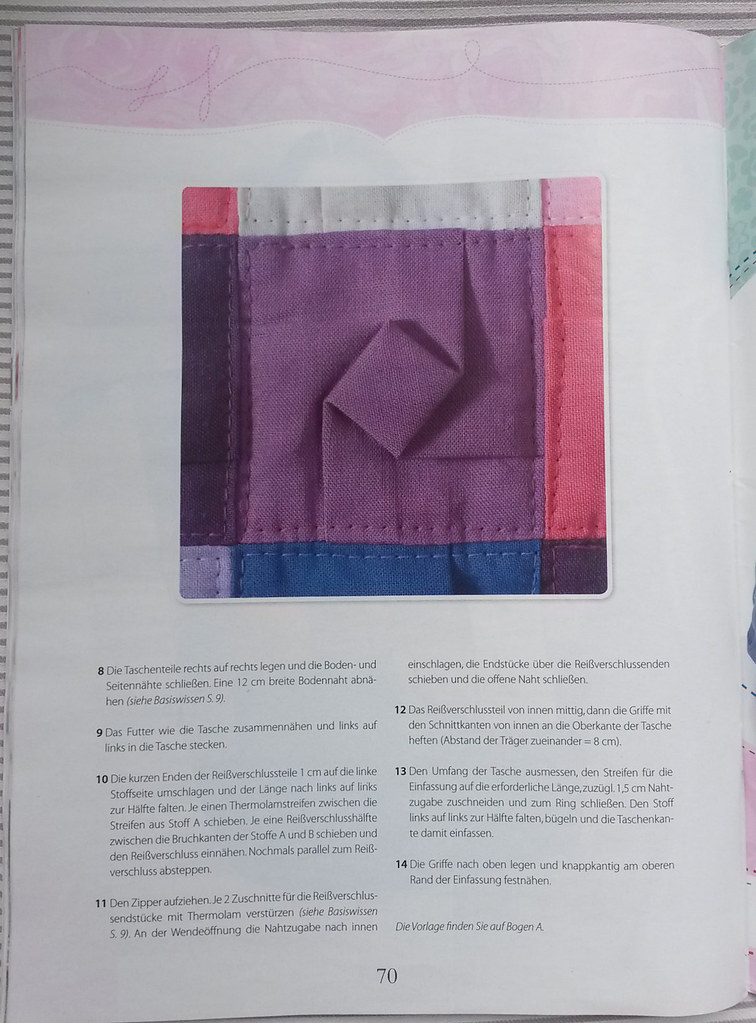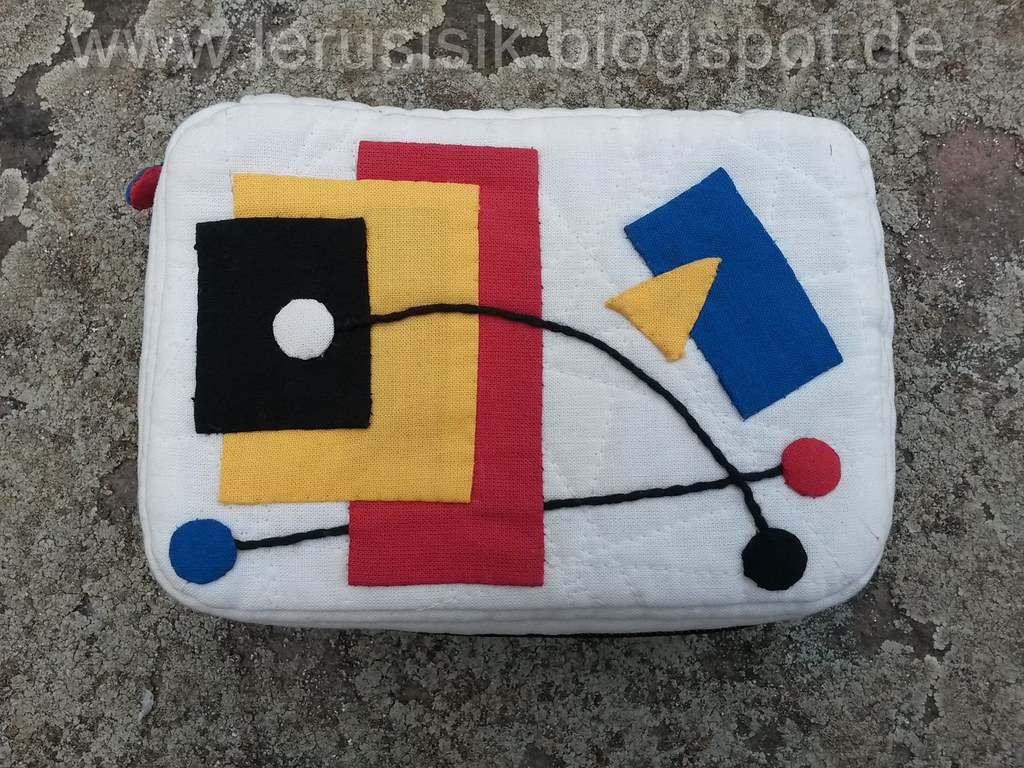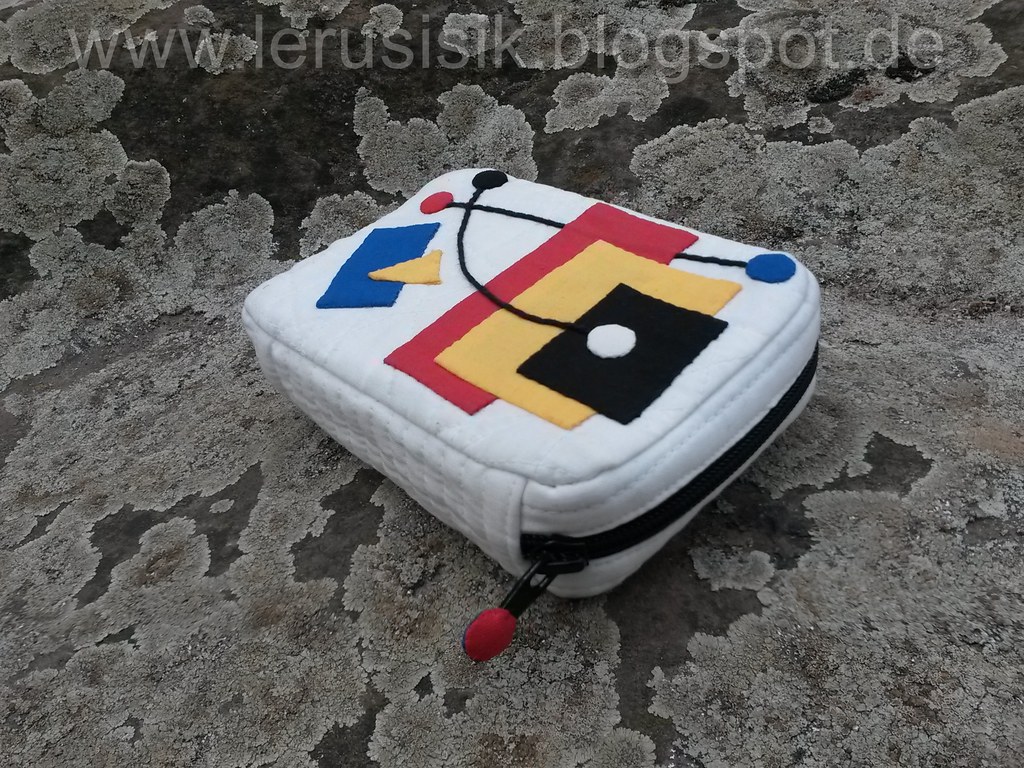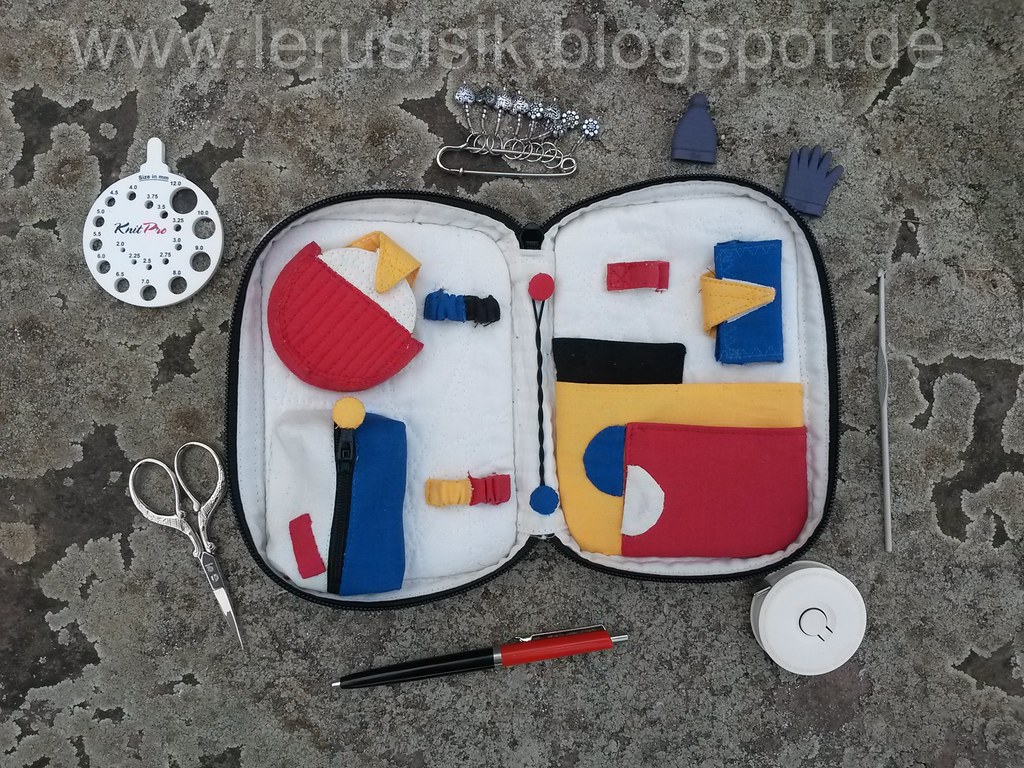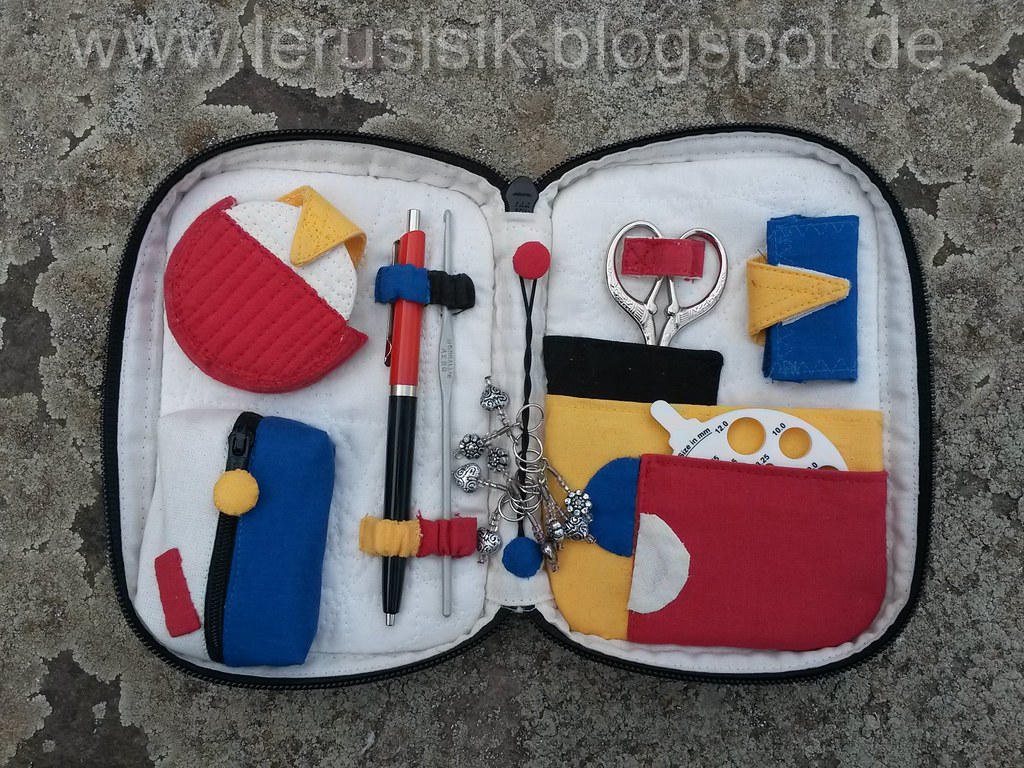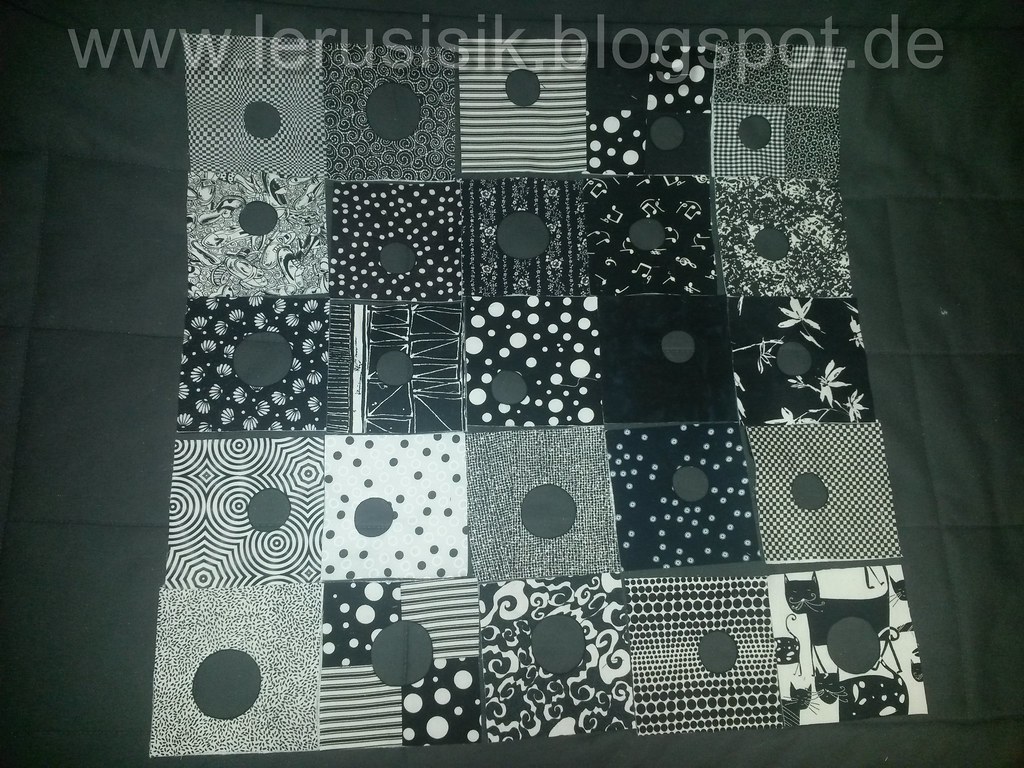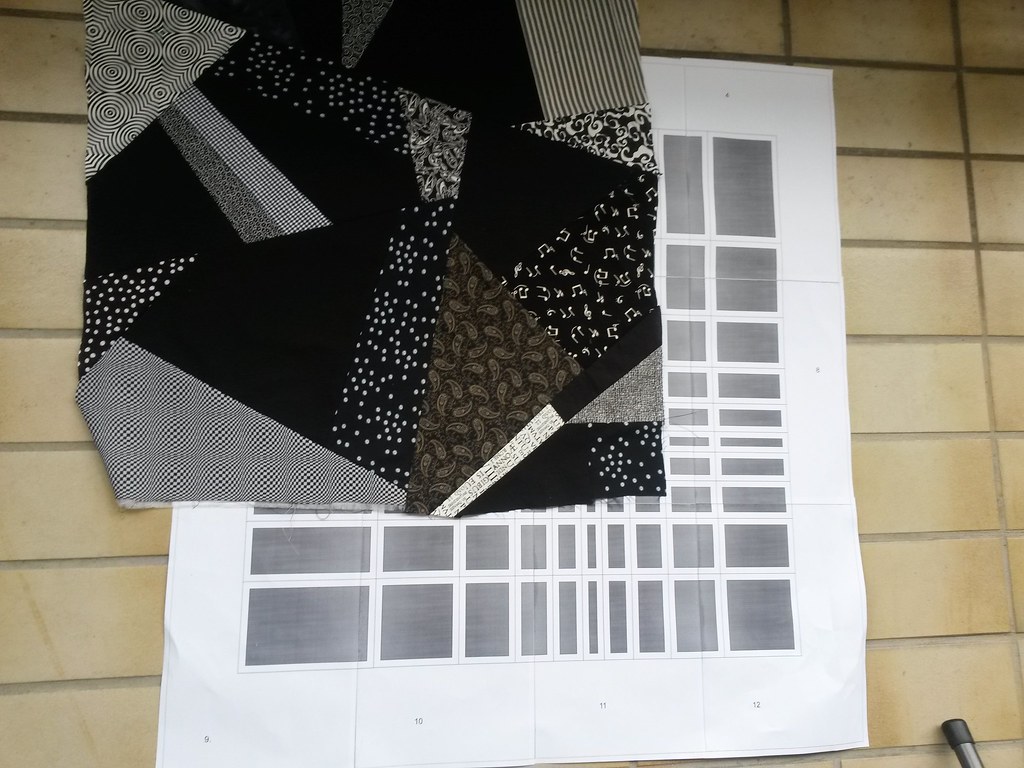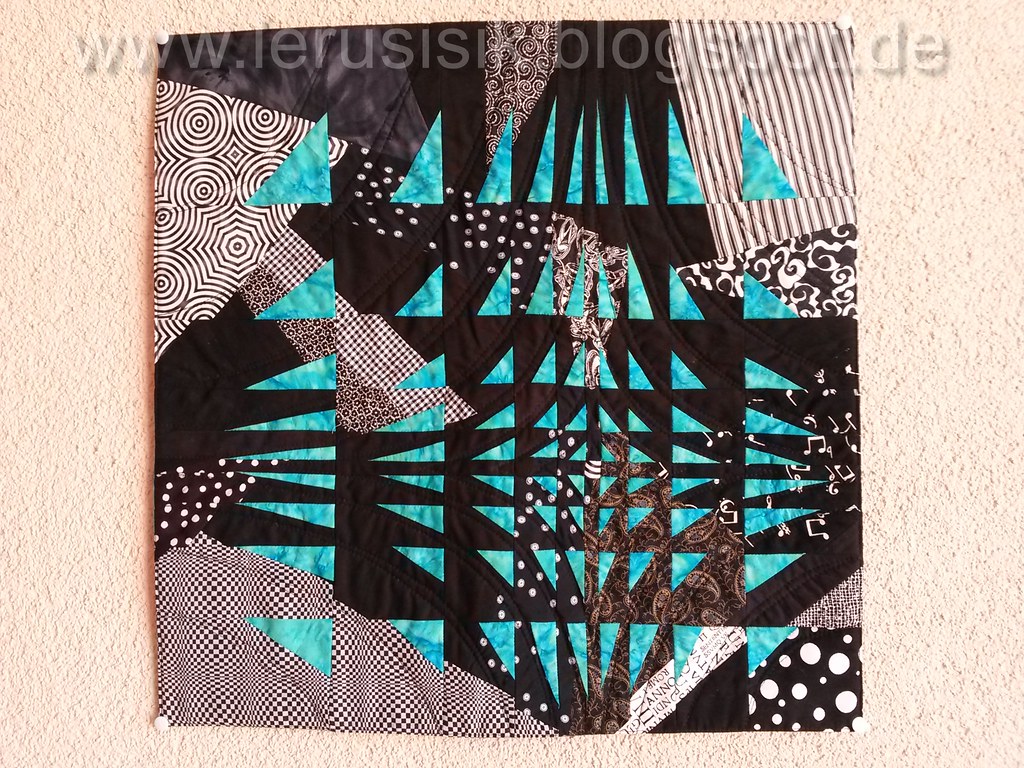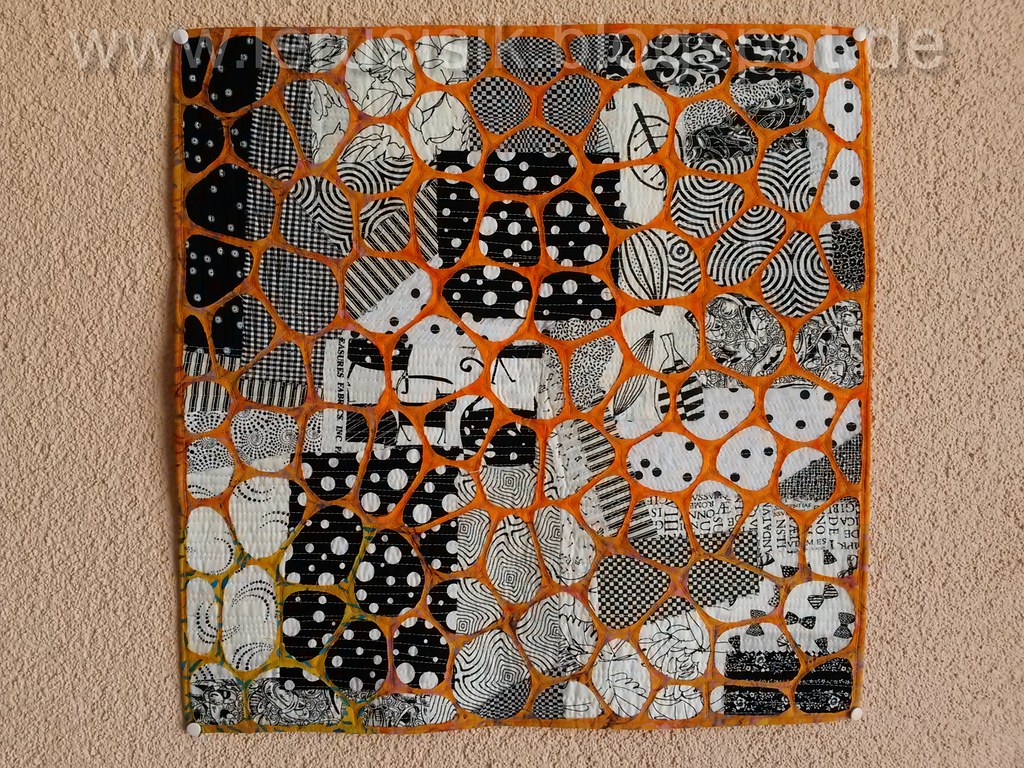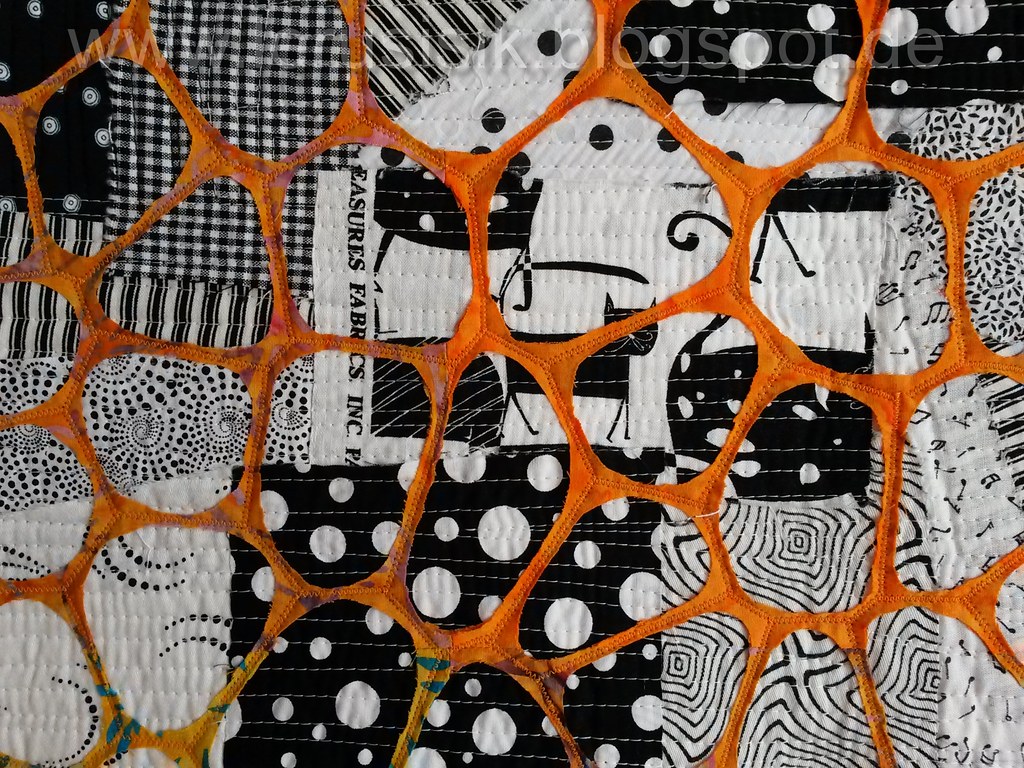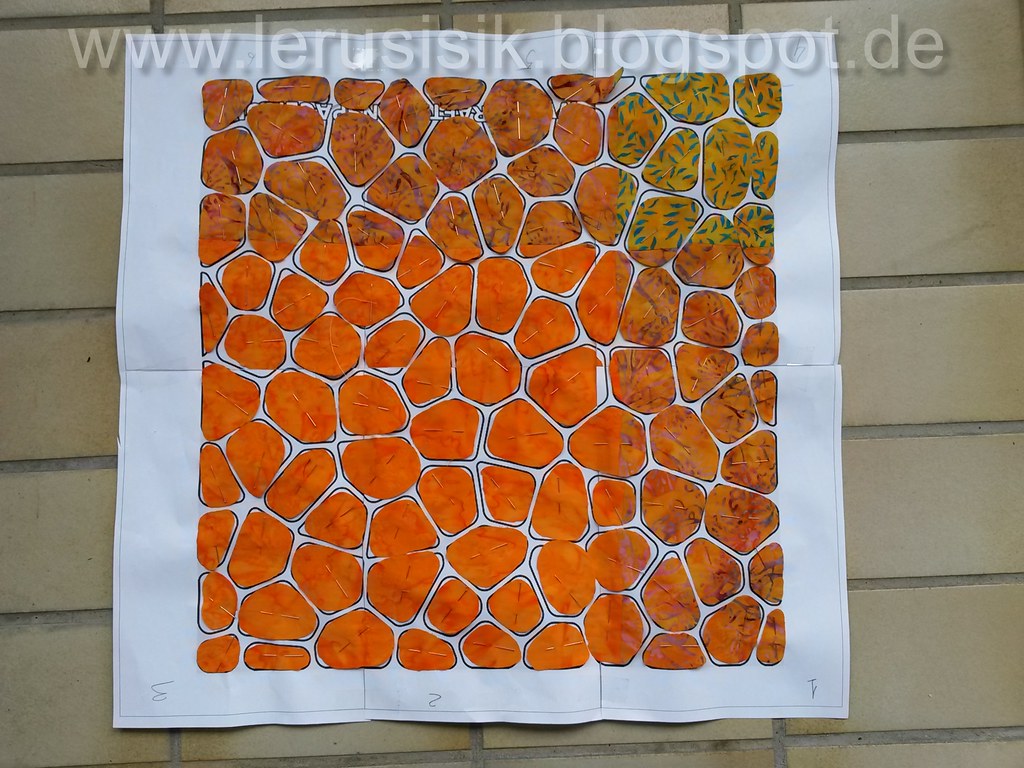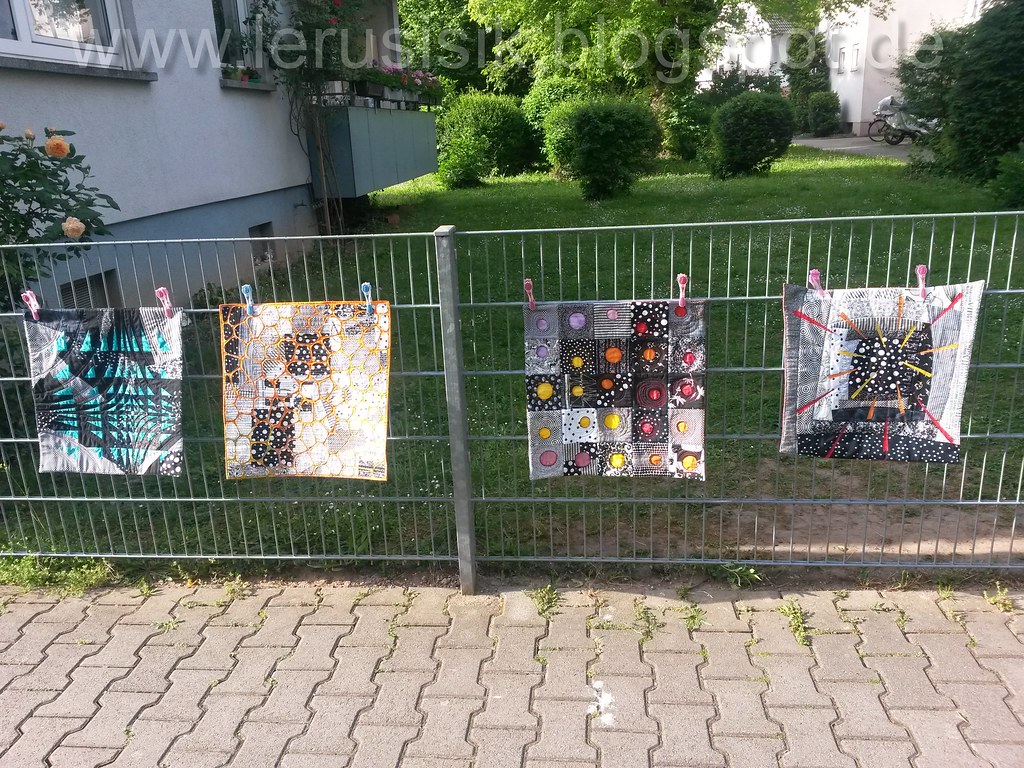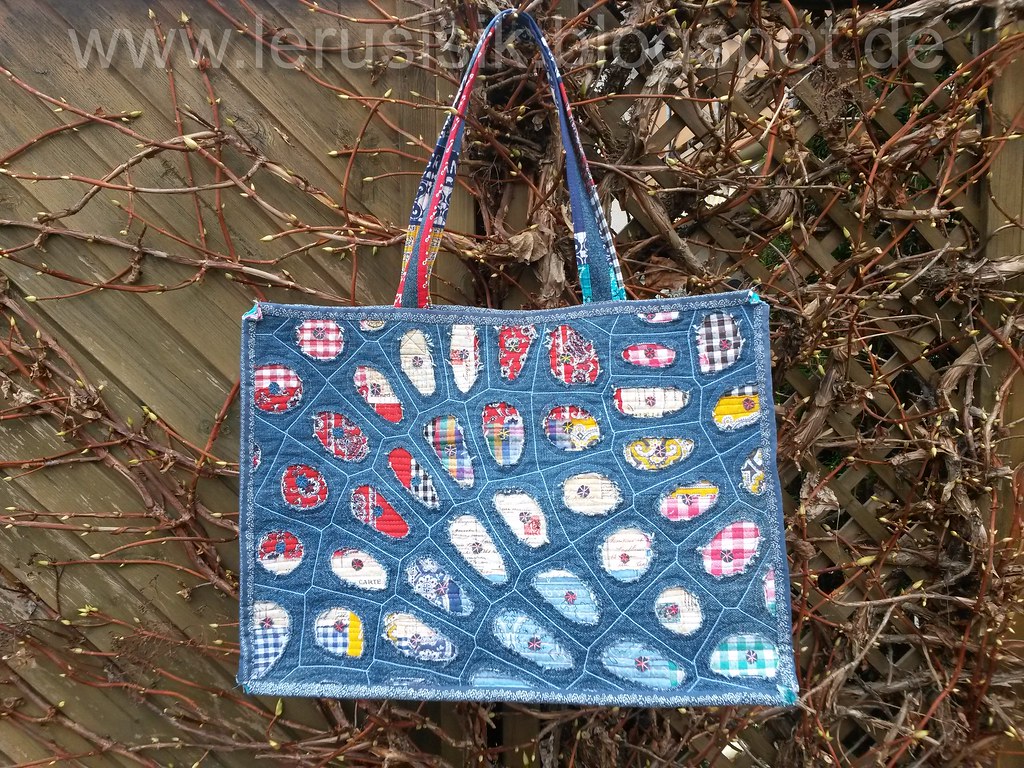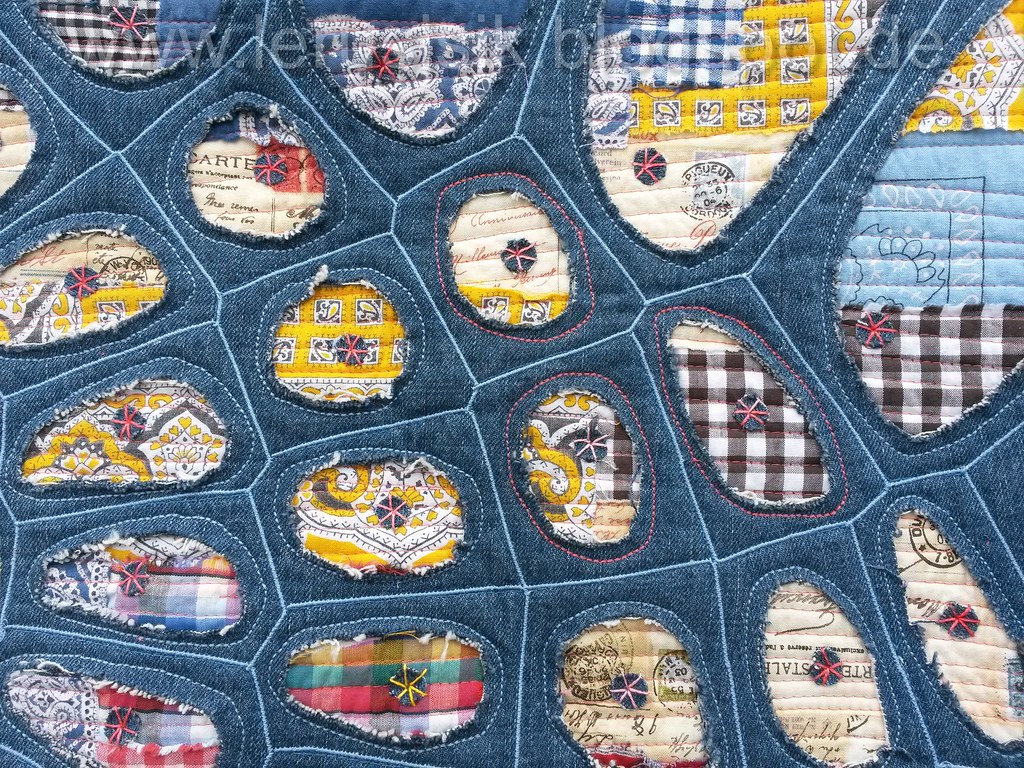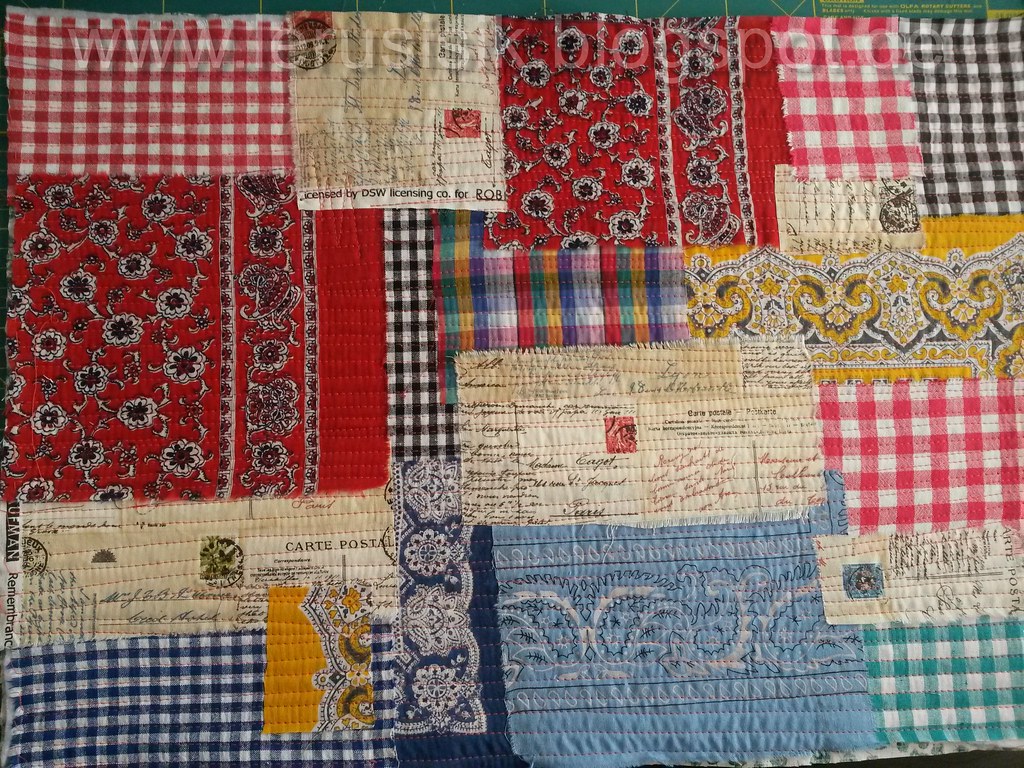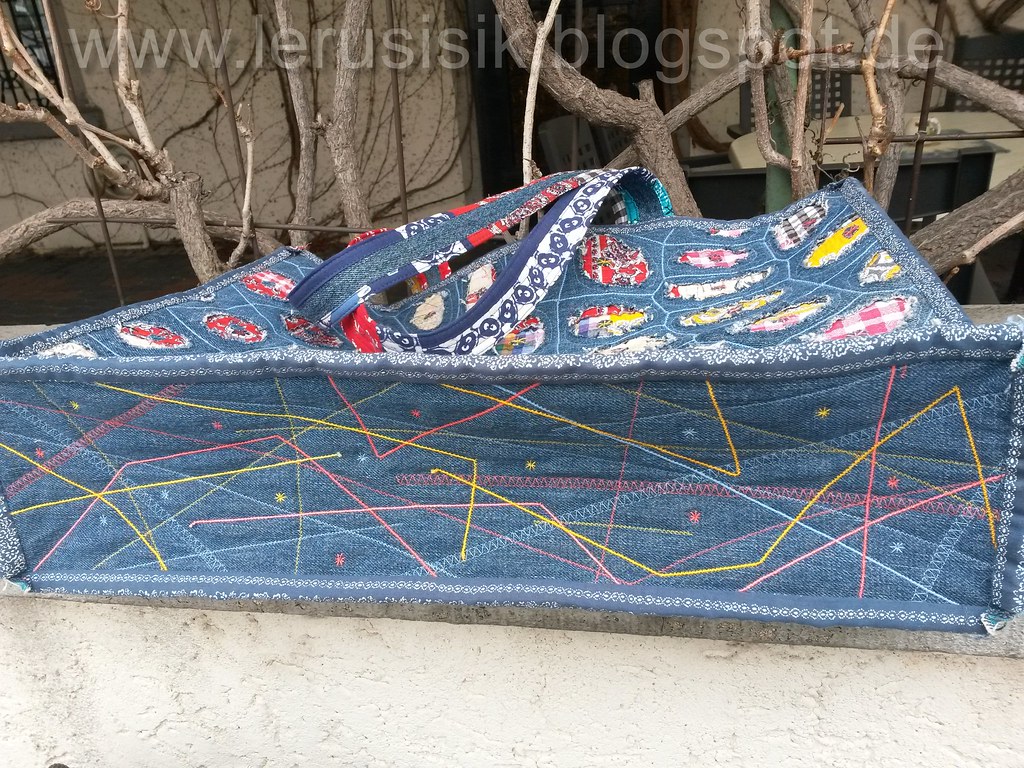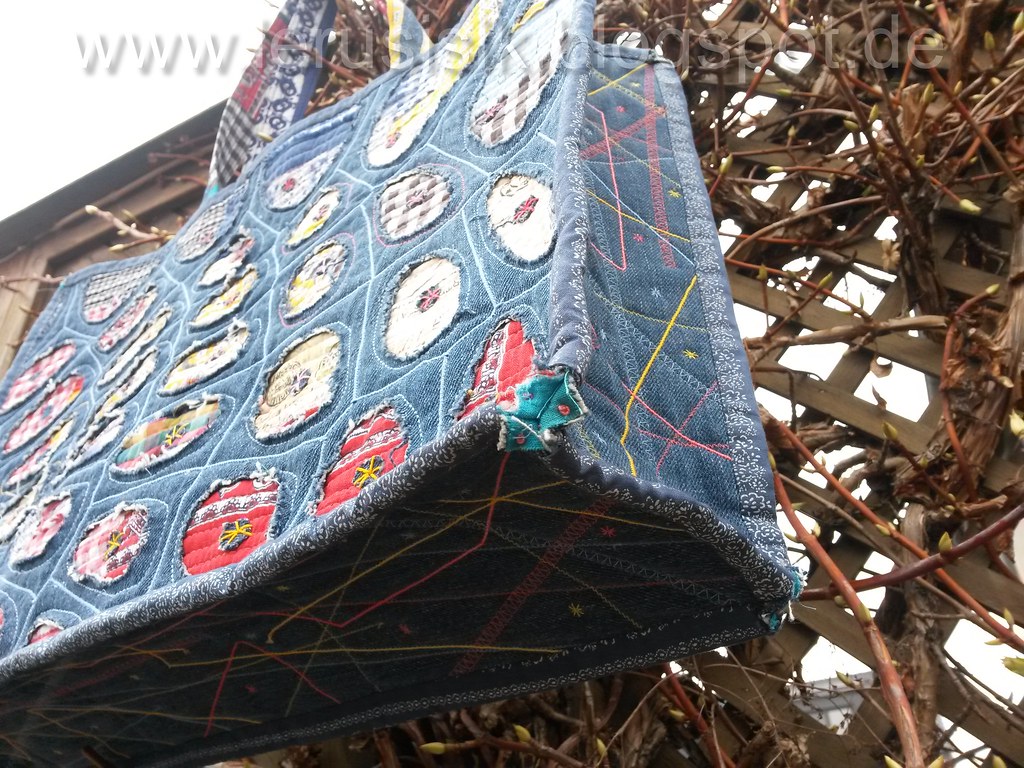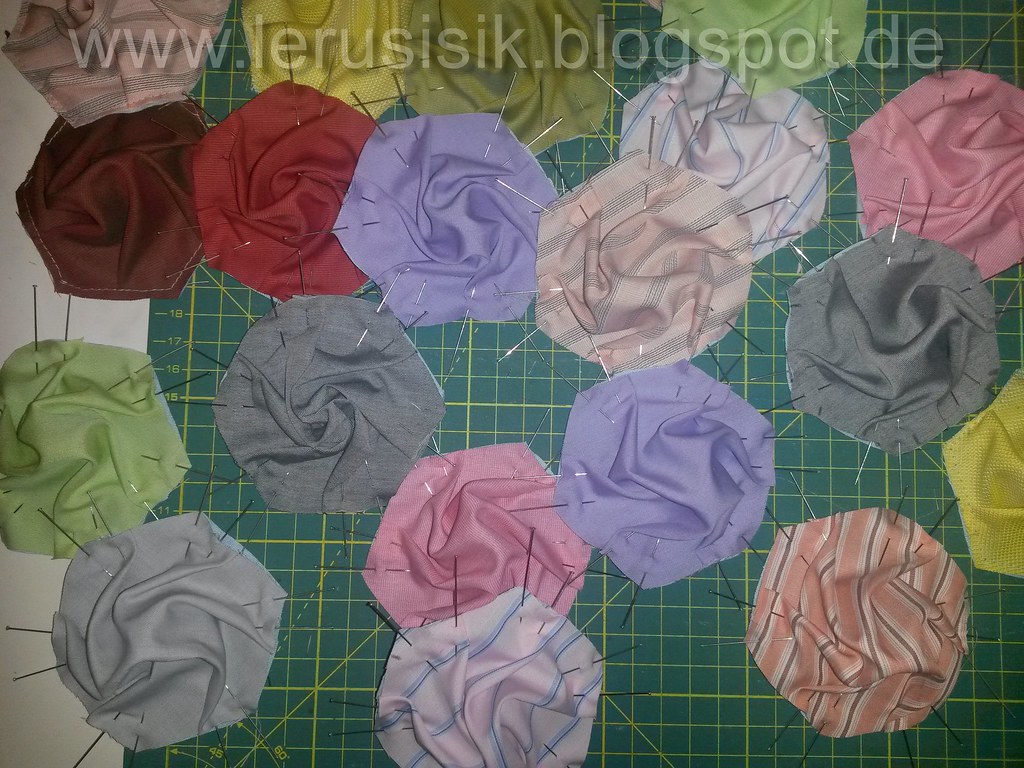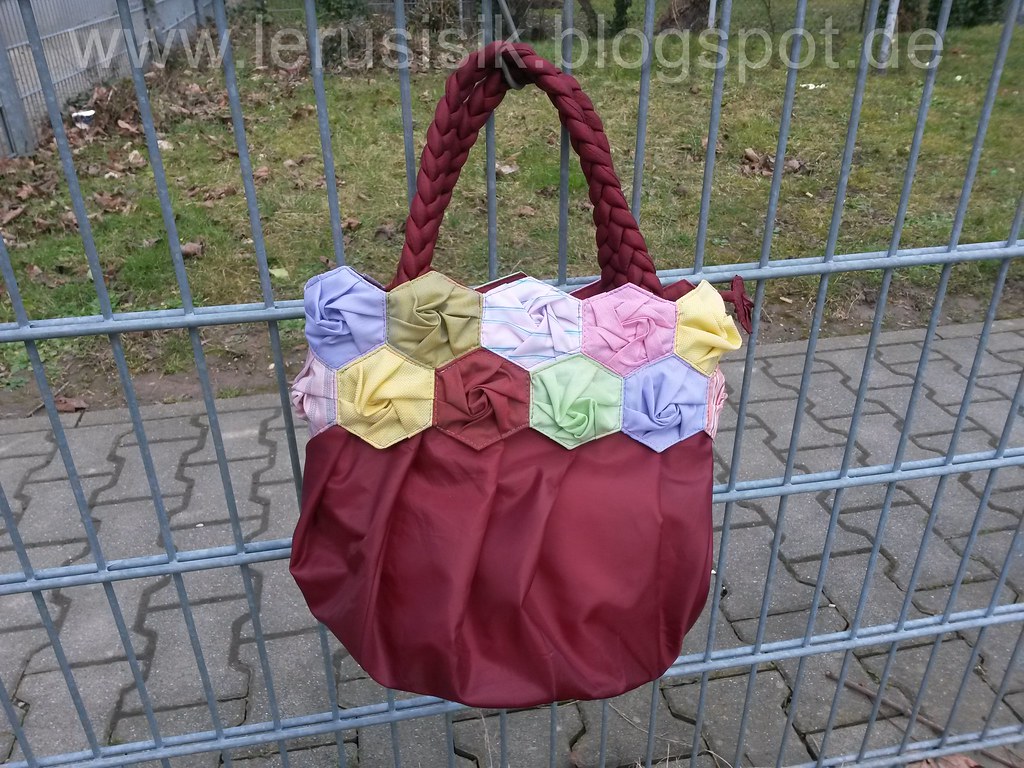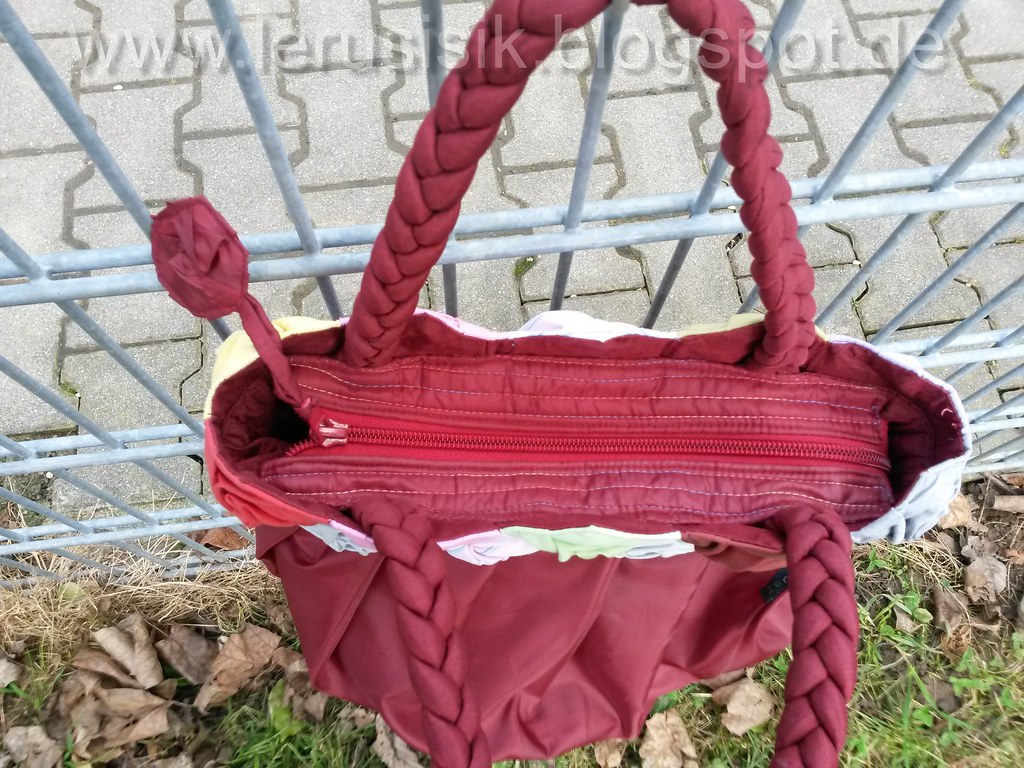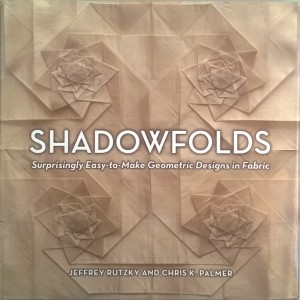D Es passiert nicht viel quiltiges in meiner realen (nicht virtuellen) Nachbarshaft. Umso mehr freute ich mich auf die Möglichkeit, an einer Challenge teilzunehmen mit dem Namen
"Color Brings Diversity to Life" - "Farbe macht das Leben bunter", sozusagen.
Jede Teilnehmerin bekam ein 25 x 25 cm großes Quadrat des Challengestoffes:
E There are not so many quilt events in my real (not virtual) neighbourhood. The more happy I was to take part in a challenge "Color Brings Diversity to Life". I've got the 10" square of the obligatory fabric:
D Die Aufgabe war die Anfertigung eines Wandbehanges mit diesem Thema, dabei soll der Challengestoff im Quilt erkennbar sein.
Meine erste Idee war, das Muster für meine
schwarz-weiße Tasche weiterzuentwickeln. Im Nu hatte ich einen sehr frei geschnittenen Log-Cabin-Block gemacht, dünne farbige Strahlen draufappliziert, fertig war der Quilt. Da ich ein Riesenfan von "The Big Bang Theory" bin (die Serie, nicht die Urknalltheorie, obwohl die Theorie auch), habe ich den Quilt "The Little Big Bang" genannt. Hier ist die erste Version:
E The participants had to make a small wall hanging depicting the theme from above and using a recognizable amount of the fabric.
My first idea was to make a modified and maybe improved version of the pattern from my
black and white bag. It was made quickly: a very free-hand curved log cabin + some colorful "rays". Under the influense of my favorite "The Big Bang Theory" (I mean the TV series, not a physical theory. But then again, the theory too) I've called the quilt "The Little Big Bang". Here is the first version:
D Nicht schlecht - abgesehen vom Binding. Die Einfassung gefiel mir gar nicht. Aber zu dieser Zeit hatte ich schon die Idee für den nächsten "physikalischen" Quilt mit einem Rest des Challengestoffes.
Ich legte den 1. Quilt vorübergehend beiseite and fing mit Nummer zwei an
E It was not bad except for the binding - I didn't like it at all. But at that time I had already an idea for the next nearly physical quilt. I put the first one aside and started the Experiment #2.
D Sorry fürs schlechte Foto, habe ich in meinem Nähzimmer am Abend bei meiner normalen Beleuchtung gemacht. (Und ich muss jeden Abend bei solchem Licht nähen!). Zu der Zeit waren es nur monochrome Löcher. Der farbige Hintergrund kam später und so entstand der Quilt "
Farbige Schwarze Löcher":
E Sorry for the poor photo, it was made at the evening in my working room (and I have to sew by that light every
day night!) It's just the holes by then, without color. Later on I added the background layer and now it calls
"Colorful Black Holes" and looks like this:
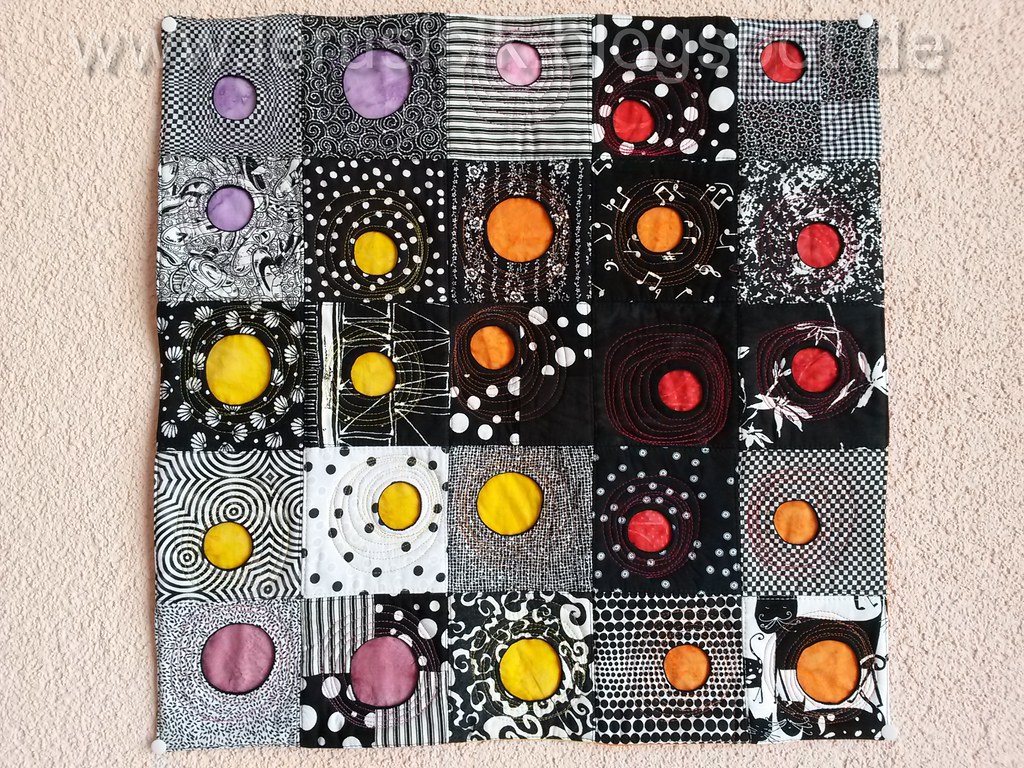 |
| "Colorful Black Holes" |
D Nachdem Nr. 2 ohne Einfassung vorlag, war mir endgültig klar, dass auch bei der Nr. 1 die schwarze Einfassung weg sollte. Hier ist also die letzte Version vom
"The Little Big Bang":
E After the finishing of the second quilt it was completely clear to me that the first one doesn't need any binding at all. So I ripped off the black binding and finished the
"The Little Big Bang" without a binding:
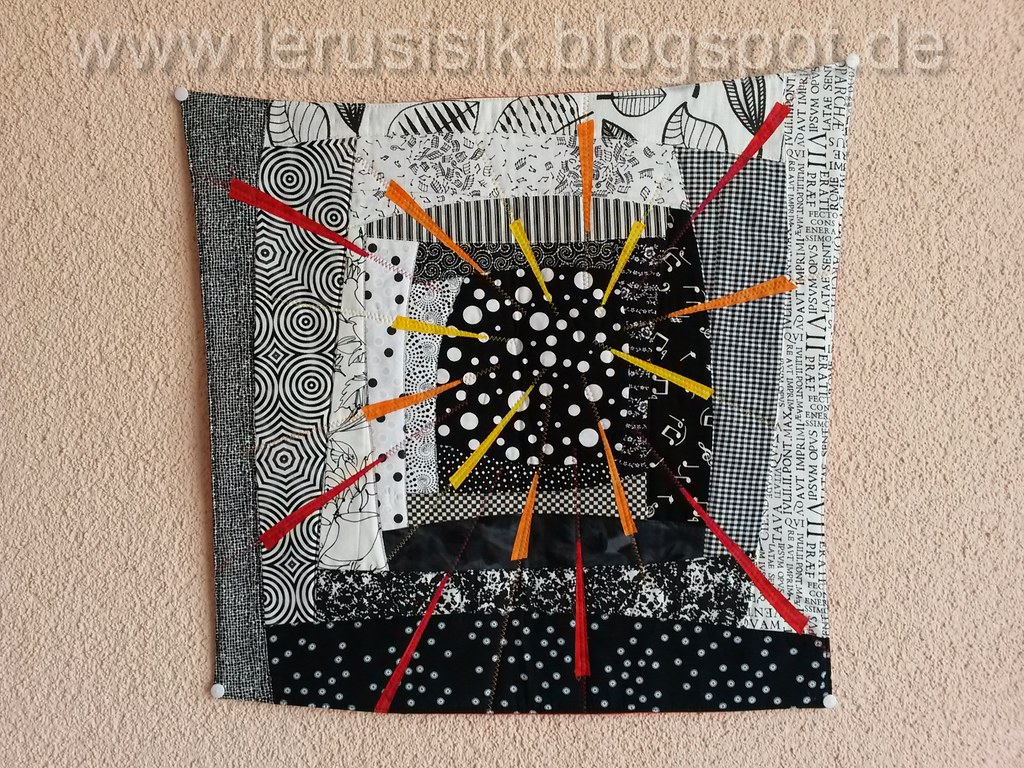 |
| "The Little Big Bang" |
D Nun hatte ich zwar keinen Challengestoff mehr, dafür aber einige weitere Ideen für "wissentschaftliche" schwarz-weiße Quilts. Deswegen bestellte ich noch ein Quadrat vom Challengestoff und fing mit dem nächsten Quilt an. Ursprünglich sollte der Name "Geordnetes Chaos" lauten. Zuerst habe ich einen (fast) schwarz-weißen Hintergrund gemacht:
E Now all the challenge fabric was gone, but I still couldn't stop producing new black and white ideas. So I've got another piece of the fabric and started the next quilt. I already knew its name - "The Ordered Chaos". I printed out the cutting pattern and made an almost black and white background:
D Es sollte eine Art Verschnitttechnik mit zusätzlichen farbigen Dreiecken sein. Beim Zusammennähen habe ich jedoch bemerkt, dass der Quilt nicht besonders chaotisch wirkte. Die Fibonacci-Folge besiegte das Chaos:
E But as the piecing went further I noticed that the quilt doesn't want to be very chaotic. The order, represented by the Fibonacchi sequence, defeated the chaos:
D Der Quilt heißt nun "
Fibonacci Study". Wieder ohne Einfassung.
E Da ich noch ein Stückchen vom Challengestoff übrig hatte, mußte ich noch einen Quilt machen. Diesmal versuchte ich wieder, Voronoi Diagramm in einem Quilt einzusetzen (der 1. Versuch war die
Voronoi-Tasche hier). Hier kommt "
Voronoi Study #2":
Now it's called
"Fibonacci Study" and finished without a binding too.
Since I still had a piece of the challenge fabric I had to make another quilt. It was my 2nd approach to the beautiful mathematical object - Voronoi diagrams (the first one was the
Voronoi bag here). Here comes
"Voronoi Study #2":
D Technisch gesehen ist der Quilt der Tasche sehr ähnlich, nur das Voronoi-Diagramm und die Stoffe sind anders.
E Technically, the quilt is very similar to the bag, it's the Voronoi diagram and the fabrics that differ. Without a binding either.
D Ich habe alle ausgeschnittene orangefarbene Stoffstücke fürs Spätere aufgehoben - vielleicht eine neue Tasche?
E This time I preserved all cut out orange pieces with the purpose of making another quilt:
D Somit war der Stoff beinahe verbraucht. So sehen alle vier Quilts zusammen aus:
E By now, I've used almost all challenge fabric. There are all four quilt together:
P.S.
D Ich bin echt zufrieden mit den Ergebnissen. So zufrieden dass ich das "Voronoi Study #2" fürs
Blogger's Quilt Festival in die Kategorie "Original Design" eingereicht. Wenn Ihnen der Quilt gefällt, dann und nur dann stimmen Sie für ihn, es wäre Freude für mich.
E I'm very happy with the results, really. So happy that I've submitted the "Voronoi Study #2" for the
Blogger's Quilt Festival. If and only if you like it (the orange one) then I'd be pleased if you vote for it.
P.P.S.
And thank you for reading so far

